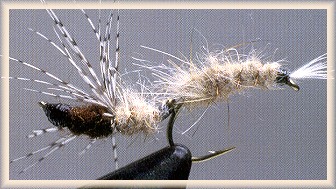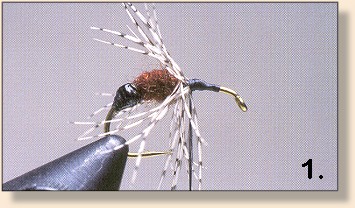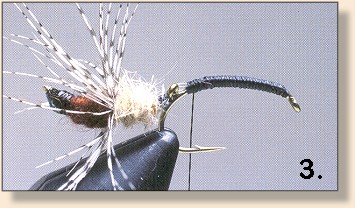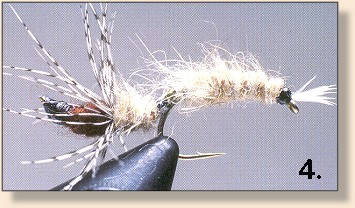
4. Tie in the wire for the rib. Dub the back half of
the body. Tie in the short tail fibers.
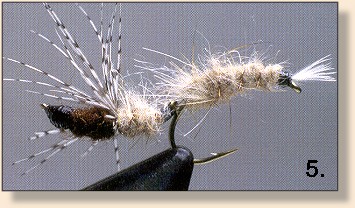
5. Wrap the rib and tie-off. Pick out fur on bottom.
Fishing Tip:
With more and more anglers practicing catch-and-release,
realistic flies have become necessary for success.
Realistic meaning more than mere appearance but also
natural action and performance. When tying caddis
imitations you must consider many factors, including
size, translucence, silhouette and action. You must also
be aware of the type of water the fly will be fish in.
Fast-water flies need more flotation and generally need
not be as exact in appearance as flies to be fished in
calm, glassy waters. This is true for any imitation.
~ Carl & Bob
Credits: We thank
Frank Amato Publications Inc. for use permission for this excerpt from Caddis
Super Hatches.
|

